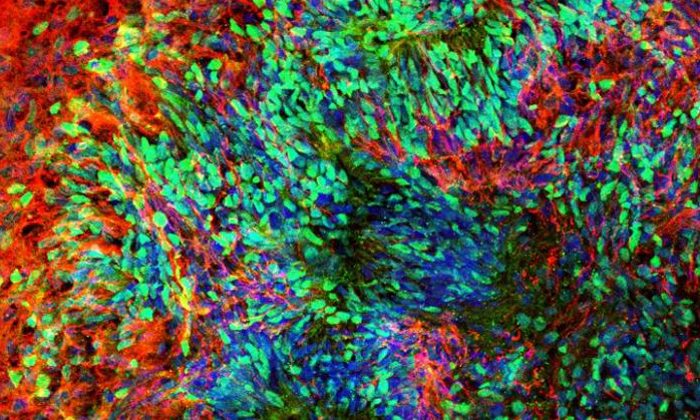Key gene targeting could lead to treatment for Down syndrome
Posted: 29 May 2019 | Drug Target Review | No comments yet
Researchers use stem cell-based disease models to pinpoint gene linked to impaired memory in Down syndrome.


A living 3D 'organoid' model of the brain generated from Down syndrome human stem cells (credit: Ranjie Xu/Rutgers University-New Brunswick).
According to the study, targeting a key gene before birth could help lead to a treatment for Down syndrome by reversing abnormal embryonic brain development and improving cognitive function after birth.
Focusing on human chromosome 21 gene OLIG2, the researchers developed two experimental models – a living 3D ‘organoid’ model of the brain and a mouse brain model with implanted human cells – to investigate early brain development linked to Down syndrome.
“Our results suggest the OLIG2 gene is potentially an excellent prenatal therapeutic target to reverse abnormal embryonic brain development, rebalance the two types of neurons in the brain – excitatory and inhibitory, and a healthy balance is critical – as well as improve postnatal cognitive function,” said Peng Jiang, assistant professor in the Department of Cell Biology and Neuroscience at Rutgers University-New Brunswick.
The researchers obtained skin cells collected from Down syndrome patients and genetically reprogrammed those cells to human-induced pluripotent stem cells (hiPSCs). Resembling embryonic stem cells, the special cells can develop into many different types of cells, including brain cells, during early life and growth and are useful tools for drug development and disease modelling, according to the National Institutes of Health.
Using brain cells derived from stem cells with an extra copy of chromosome 21, the scientists developed the 3D brain organoid model, which resembles the early developing human brain. They also developed the mouse brain model, with stem cell-derived human brain cells implanted into the mouse brain within a day after the mice were born.
They found that inhibitory neurons were overproduced in both models, and adult mice had impaired memory. They also found that the OLIG2 gene plays a critical role in those effects and that inhibiting it led to improvements.
The study was published in the journal Cell Stem Cell.
Related topics
Analysis, Gene testing, Genetic analysis, Neurons, Research & Development, Stem Cells
Related conditions
Down syndrome
Related organisations
Rutgers University-New Brunswick
Related people
Peng Jiang



